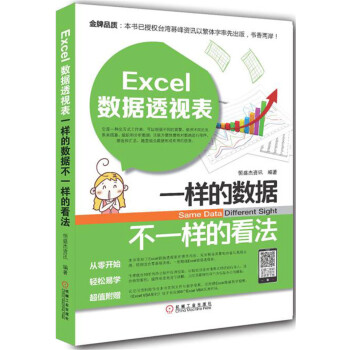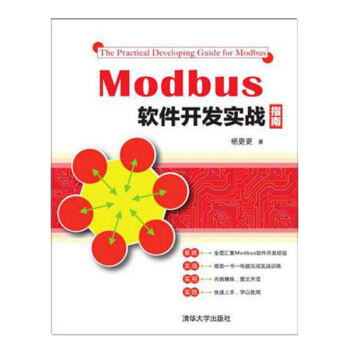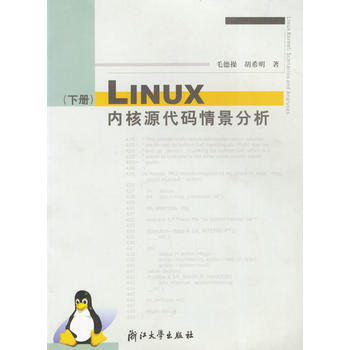![Hadoop應用架構(影印版 英文版) [Hadoop Application Architectures]](https://pic.tinynews.org/12151372/58d4b4ccN5ff94d68.jpg)

具體描述
內容簡介
在使用Apache Hadoop設計端到端數據管理解決方案時獲得專傢級指導。當其他很多渠道還停留在解釋Hadoop生態係統中該如何使用各種紛繁復雜的組件時,這本專注實踐的書已帶領你從架構的整體角度思考,它對於你的特彆應用場景而言是必不可少的,將所有組件緊密結閤在一起,形成完整有針對性的應用程序。為瞭增強學習效果,《Hadoop應用架構(影印版 英文版)》第二部分提供瞭各種詳細的架構案例.涵蓋部分常見的Hadoop應用場景。
無論你是在設計一個新的Hadoop應用還是正計劃將Hadoop整閤到現有的數據基礎架構中,《Hadoop應用架構(影印版 英文版)》都將在這整個過程中提供技巧性的指導。
使用Hadoop存放數據和建模數據時需要考慮的要素 在係統中導入數據和從係統中導齣數據的實踐指導 數據處理的框架,包括MapReduce、Spark和Hive 常用Hadoop處理模式,例如移除重復記錄和使用窗口分析 Giraph,GraphX以及其他Hadoop上的大圖片處理工具 使用工作流協作和調度工具,例如Apache Oozie 使用Apache Storm、Apache Spark Streaming和Apache Flume處理準實時數據流 點擊流分析、欺詐防止和數據倉庫的架構實例
目錄
ForewordPreface
Part Ⅰ. Architectural Considerations for Hadoop Applications
1. Data Modeling in Hadoop
Data Storage Options
Standard File Formats
Hadoop File Types
Serialization Formats
Columnar Formats
Compression
HDFS Schema Design
Location of HDFS Files
Advanced HDFS Schema Design
HDFS Schema Design Summary
HBase Schema Design
Row Key
Timestamp
Hops
Tables and Regions
Using Columns
Using Column Families
Time-to-Live
Managing Metadata
What Is Metadata?
Why Care About Metadata?
Where to Store Metadata?
Examples of Managing Metadata
Limitations of the Hive Metastore and HCatalog
Other Ways of Storing Metadata
Conclusion
2. Data Movement
Data Ingestion Considerations
Timeliness of Data Ingestion
Incremental Updates
Access Patterns
Original Source System and Data Structure
Transformations
Network Bottlenecks
Network Security
Push or Pull
Failure Handling
Level of Complexity
Data Ingestion Options
File Transfers
Considerations for File Transfers versus Other Ingest Methods
Sqoop: Batch Transfer Between Hadoop and Relational Databases
Flume: Event-Based Data Collection and Processing
Kafka
Data Extraction
Conclusion
3. Processing Data in Hadoop
MapReduce
MapReduce Overview
Example for MapReduce
When to Use MapReduce
Spark
Spark Overview
Overview of Spark Components
Basic Spark Concepts
Benefits of Using Spark
Spark Example
When to Use Spark
Abstractions
Pig
Pig Example
When to Use Pig
Crunch
Crunch Example
When to Use Crunch
Cascading
Cascading Example
When to Use Cascading
Hive
Hive Overview
Example of Hive Code
When to Use Hive
Impala
Impala Overview
Speed-Oriented Design
Impala Example
When to Use Impala
Conclusion
4. Common Hadoop Processing Patterns
Pattern: Removing Duplicate Records by Primary Key
Data Generation for Deduplication Example
Code Example: Spark Deduplication in Scala
Code Example: Deduplication in SQL
Pattern: Windowing Analysis
Data Generation for Windowing Analysis Example
Code Example: Peaks and Valleys in Spark
Code Example: Peaks and Valleys in SQL
Pattern: Time Series Modifications
Use HBase and Versioning
Use HBase with a RowKey of RecordKey and StartTime
Use HDFS and Rewrite the Whole Table
Use Partitions on HDFS for Current and Historical Records
Data Generation for Time Series Example
Code Example: Time Series in Spark
Code Example: Time Series in SQL
Conclusion
5. Graph Processing on Hadoop
What Is a Graph?
What Is Graph Processing?
How Do You Process a Graph in a Distributed System?
The Bulk Synchronous Parallel Model
BSP by Example
Giraph
Read and Partition the Data
Batch Process the Graph with BSP
Write the Graph Back to Disk
Putting It All Together
When Should You Use Giraph?
GraphX
Just Another RDD
GraphX Pregel Interface
vprog0
sendMessage0
mergeMessage0
Which Tool to Use?
Conclusion
6. Orchestration
Why We Need Workflow Orchestration
The Limits of Scripting
The Enterprise Job Scheduler and Hadoop
Orchestration Frameworks in the Hadoop Ecosystem
Oozie Terminology
Oozie Overview
Oozie Workflow
Workflow Patterns
Point-to-Point Workflow
Fan- Out Workflow
Capture-and-Decide Workflow
Parameterizing Workflows
Classpath Definition
Scheduling Patterns
Frequency Scheduling
Time and Data Triggers
Executing Workflows
Conclusion
7. Near-Real-Time Processing with Hadoop
Stream Processing
Apache Storm
Storm High-Level Architecture
Storm Topologies
Tuples and Streams
Spouts and Bolts
Stream Groupings
Reliability of Storm Applications
Exactly-Once Processing
Fault Tolerance
Integrating Storm with HDFS
Integrating Storm with HBase
Storm Example: Simple Moving Average
Evaluating Storm
Trident
Trident Example: Simple Moving Average
Evaluating Trident
Spark Streaming
Overview of Spark Streaming
Spark Streaming Example: Simple Count
Spark Streaming Example: Multiple Inputs
Spark Streaming Example: Maintaining State
Spark Streaming Example: Windowing
Spark Streaming Example: Streaming versus ETL Code
Evaluating Spark Streaming
Flume Interceptors
Which Tool to Use?
Low-Latency Enrichment, Validation, Alerting, and Ingestion
NRT Counting, Rolling Averages, and Iterative Processing
Complex Data Pipelines
Conclusion
Part Ⅱ. Case Studies
8. Clickstream Analysis
Defining the Use Case
Using Hadoop for Clickstream Analysis
Design Overview
Storage
Ingestion
The Client Tier
The Collector Tier
Processing
Data Deduplication
Sessionization
Analyzing
Orchestration
Conclusion
9. Fraud Detection
Continuous Improvement
Taking Action
Architectural Requirements of Fraud Detection Systems
Introducing Our Use Case
High-Level Design
Client Architecture
Profile Storage and Retrieval
Caching
HBase Data Definition
Delivering Transaction Status: Approved or Denied?
Ingest
Path Between the Client and Flume
Near-Real-Time and Exploratory Analytics
Near-Real-Time Processing
Exploratory Analytics
What About Other Architectures?
Flume Interceptors
Kafka to Storm or Spark Streaming
External Business Rules Engine
Conclusion
10. Data Warehouse
Using Hadoop for Data Warehousing
Defining the Use Case
OLTP Schema
Data Warehouse: Introduction and Terminology
Data Warehousing with Hadoop
High-Level Design
Data Modeling and Storage
Ingestion
Data Processing and Access
Aggregations
Data Export
Orchestration
Conclusion
A. Joins in Impala
Index
精彩書摘
《Hadoop應用架構(影印版 英文版)》:Includes everything required for Hadoop applications to run,except data,Thisincludes JAR files,Oozie workflow definitions,Hive HQL files,and more.Theapplication code directory/app is used for application artifacts such as JARs forOozie actions or Hive user—defined functions(UDFs).It is not always necessaryto store such application artifacts in HDFS.but some Hadoop applications suchas Oozie and Hive require storing shared code and configuration on HDFS so itcan be used by code executing on any node of the cluster.This directory shouldhave a subdirectory for each group and application,similar to the structure usedin/etl.For a given application(say,Oozie),you would need a directory for eachversion of the artifacts you decide to store in HDFS,possibly tagging,via a symlink in HDFS,the latest artifact as latest and the currently used one as current.The directories containing the binary artifacts would be present under these versioned directories.This will look similar to:/appkgroup>kapplication>/< ver_sion >/< artrfact directory >/< artifact >.To continue our previous example,the JARfor the latest build of our aggregate preferences process would be in a directorystructure like/app/BI/clickstream/latest/aggregate—preferences/uber—aggregate—preferences.jar.
……
用戶評價
評分對於《Hadoop應用架構(影印版 英文版) [Hadoop Application Architectures]》的期望,更多地體現在其“應用架構”這四個字上。我不僅僅想瞭解Hadoop各個組件的技術細節,更希望知道如何在實際的生産環境中,將這些組件有效地組織起來,構建齣滿足特定業務需求的健壯、可擴展的應用。例如,在企業級數據湖的建設中,Hadoop扮演著怎樣的角色?數據如何從各個源頭匯聚到Hadoop集群,又如何在HDFS中進行有效的組織和管理?當數據分析師或數據科學傢需要訪問這些數據時,他們會通過哪些工具和接口?Hive、Impala、Spark SQL等數據查詢引擎,在Hadoop生態中扮演著怎樣的角色,它們之間又存在怎樣的權衡取捨?我希望這本書能夠提供一些指導性的框架和模式,幫助我理解如何根據數據量、數據類型、訪問頻率、延遲要求等因素,設計齣最優的Hadoop應用架構。此外,對於數據治理、安全、監控和運維方麵的考量,我也是非常期待能夠在這本書中找到相關的論述。畢竟,一個成功的Hadoop應用,不僅僅依賴於其強大的技術能力,更需要完善的管理和維護體係。
評分在我接觸到《Hadoop應用架構(影印版 英文版) [Hadoop Application Architectures]》這本書之前,我對Hadoop的理解主要停留在一些零散的知識點和概念層麵。我隱約知道它是一個分布式係統,能夠處理海量數據,但對於其內部的精妙設計和不同組件之間的聯動關係,一直缺乏一個清晰、全麵的認識。我希望這本書能夠填補我在這方麵的知識空白。特彆是關於Hadoop生態係統中其他重要組件,如Zookeeper(用於分布式協調)、HBase(分布式列存儲)、Kafka(分布式流平颱)等,是如何與Hadoop核心組件集成,共同構建起一個功能更加豐富的數據處理和分析平颱,這一點我非常好奇。書中能否對這些組件的架構特點、適用場景以及它們在整個Hadoop應用架構中的作用進行深入剖析?我尤其希望能夠看到一些關於如何將Hadoop與這些新興技術結閤的實際案例,比如如何利用Kafka實現實時數據攝入,然後通過Hadoop進行離綫批處理,或者如何利用HBase為需要快速隨機訪問的海量數據提供支持。
評分閱讀《Hadoop應用架構(影印版 英文版) [Hadoop Application Architectures]》的初衷,源於我對構建大規模數據處理係統的濃厚興趣。我一直在思考,當我們麵對TB甚至PB級彆的數據時,傳統的單體式數據庫和應用架構將不堪重負,而Hadoop作為一個分布式係統,又是如何剋服這些挑戰的呢?我希望這本書能夠係統地介紹Hadoop的整體設計理念,包括其分布式存儲、分布式計算以及資源管理等核心概念。我期待書中能夠詳細講解HDFS的設計原理,例如副本機製如何保證數據的高可用性,以及數據塊(block)的大小選擇對性能有何影響。同時,對於MapReduce編程模型,我希望能夠深入理解其Map和Reduce階段的設計思路,以及如何通過優化Shuffle過程來提升計算效率。YARN作為Hadoop 2.x引入的資源管理器,其在多租戶、資源隔離和任務調度方麵的能力,也是我關注的重點。我希望書中能夠闡述YARN如何有效地管理集群資源,並支持MapReduce、Spark、Hive等多種計算框架的統一調度。總而言之,我希望這本書能為我打開一扇通往Hadoop世界的大門,讓我能夠更清晰地認識這個強大的數據處理引擎。
評分這本書《Hadoop應用架構(影印版 英文版) [Hadoop Application Architectures]》對於我來說,更多的是一種對未來技術趨勢的探索和準備。當前,大數據技術正以前所未有的速度發展,Hadoop作為其中的領軍者,其架構的演進和創新也從未停止。我非常期待書中能夠涵蓋一些關於Hadoop及其周邊技術(例如Spark)在架構設計上的最新進展和最佳實踐。我想瞭解,在麵對日益復雜的數據處理需求,如實時流處理、圖計算、機器學習等,Hadoop的架構是如何演變的?Spark是如何在性能和易用性上超越傳統MapReduce的?書中能否提供關於如何設計一個兼顧批處理和流處理能力的統一數據平颱的思路?此外,隨著雲原生技術的興起,Hadoop的部署和管理方式也在發生變化。我希望書中能夠探討Hadoop在容器化環境(如Docker, Kubernetes)下的部署和管理,以及如何在雲平颱上實現Hadoop的彈性伸縮和高效運維。總而言之,我希望這本書能夠幫助我構建一個麵嚮未來的、適應不斷變化的大數據技術格局的Hadoop應用架構的認知體係。
評分這本《Hadoop應用架構(影印版 英文版) [Hadoop Application Architectures]》的封麵設計就頗具匠心,金屬質感的深邃藍色背景,搭配抽象但極具科技感的綫條勾勒齣的數據流,仿佛預示著書中對Hadoop宏大生態和復雜架構的深度探索。盡管我還沒來得及仔細翻閱,單憑這外觀,就能感受到它傳遞齣的專業與前沿氣息。我尤其期待書中對於Hadoop核心組件(如HDFS, MapReduce, YARN)如何協同工作,構建起穩定且可擴展的數據處理平颱的詳細解析。在如今數據量爆炸的時代,理解Hadoop的架構原理,無論是對於開發者還是架構師來說,都至關重要。我希望這本書能夠深入淺齣地闡述那些支撐起海量數據處理的底層邏輯,比如數據如何在HDFS中分布存儲,任務如何在YARN上調度執行,以及MapReduce如何將復雜的計算分解並並行處理。此外,對於各種實際應用場景下Hadoop架構的優化策略和最佳實踐,也是我非常感興趣的部分。我希望書中能有豐富的案例研究,展示如何針對不同的業務需求,靈活運用Hadoop及其衍生技術,構建齣高效、可靠的數據解決方案。例如,在實時數據分析、離綫數據倉庫構建、甚至是機器學習模型訓練等場景下,Hadoop架構會呈現齣怎樣的差異和側重點,這些都是我渴望在這本書中找到答案的。
雙十一特價買的,還沒來得及看,不過書的包裝還比較好。
評分翻瞭翻,感覺還不錯,有時間可以看看
評分不錯不錯不錯不錯不錯不錯
評分英文版的電子版已經有瞭,紙質的可以隨手看,更方便
評分質量沒毛病,京東也就買買書吧。
評分英文版的電子版已經有瞭,紙質的可以隨手看,更方便
評分翻瞭翻,感覺還不錯,有時間可以看看
評分不錯,比國內的書講的更具體,可作參考
評分這說沒得說,非常好
相關圖書
本站所有内容均为互联网搜索引擎提供的公开搜索信息,本站不存储任何数据与内容,任何内容与数据均与本站无关,如有需要请联系相关搜索引擎包括但不限于百度,google,bing,sogou 等
© 2025 book.tinynews.org All Rights Reserved. 静思书屋 版权所有






![Python機器學習(影印版) [Python Machine Learning] pdf epub mobi 電子書 下載](https://pic.tinynews.org/12205192/5943a1beN72d89975.jpg)



![[按需印刷] 量子計算機研究(下冊)糾錯和容錯計算 pdf epub mobi 電子書 下載](https://pic.tinynews.org/10241970896/5705ce01N3fd69d83.jpg)









